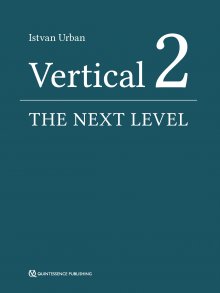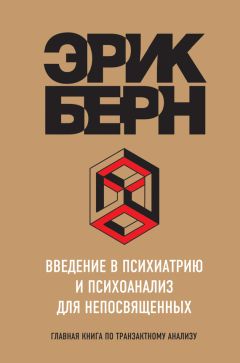Istvan Urban - Vertical 2: The Next Level of Hard and Soft Tissue Augmentation

Скачивание начинается... Если скачивание не началось автоматически, пожалуйста нажмите на эту ссылку.
Жалоба
Напишите нам, и мы в срочном порядке примем меры.
Описание книги "Vertical 2: The Next Level of Hard and Soft Tissue Augmentation"
Описание и краткое содержание "Vertical 2: The Next Level of Hard and Soft Tissue Augmentation" читать бесплатно онлайн.
A major part of this book comprises full-color, step-by-step images of patient cases. At times, reading it is like watching a surgical video, where the author 'stops the video' to discuss with you, the reader, what he is thinking and doing at that step, what his next step will be, and the reason for it.
Included again are the well-appreciated 'Lessons learned' sections, where the learning objectives are emphasized and further notes given, including ways to further improve the techniques. The section on the mandible is more detailed in this book, with the focus on larger defects and the different surgical steps in native, fibrotic, and scarred tissue types around the mental nerve during flap advancement.
In addition, light is shed on the detail in treating the anterior maxilla, which has not been published previously. It includes treatment options such as the fast track, the safe track, and the technical track of soft tissue reconstruction in conjunction with bone grafting as well as papilla reconstructions after bone regeneration. The section on the posterior maxilla hopes to resolve issues such as the management and complications of combined ridge and sinus grafting, including difficulties such as the lack of buccal, crestal or nasal bony walls of the posterior maxilla before bone grafting.
In this must-have new publication, the procedures are kept simple, repeatable, and biologically sound. The techniques presented are not overcomplicated; they are simple treatment strategies with lower complication rates and more predictability in the final outcome.
Postsurgical complications
There were only two cases (3%) with complications. One site presented membrane exposure (1-week postoperatively), and the graft material became infected at a second site. For the first case, the exposed membrane was maintained for 2 months and then removed. For the second case, the infected membrane and graft were explored and removed after 10 days of healing.
Discussion
Vertical ridge augmentation using space-making frameworks and graft materials offers an ideal balance between the expected amount of bone gain and postoperative complications compared with other interventions.4,5 The rationale of GBR is based on the creation of a sheltered, soft tissue cell-excluding area to promote osteoblast migration.6 Dimensionally stable structures such as titanium-reinforced non-resorbable membranes or non-occlusive titanium meshes support vertical dimensions more reliably than cell-occlusive but pliant absorbable membranes. Although d-PTFE is a commonly used nonresorbable barrier material, it may exhibit subpar tissue adhesive properties that risk flap integrity.7 Innovators have developed materials that better approximate the periosteum to the underlying graft. Our study utilized a RPM perforated by macropores that theoretically improves vascularization by permitting direct contact between the periosteum and the bone grafts. To our knowledge, this is the first human case series to record the use of RPM for VBA.
Fig 2-4 Graph showing defect size and absolute relative gain (SD = standard deviation).
Agreement with previous studies
Our case series achieved an absolute vertical bone gain of 5.2 ± 2.4 mm, which matched results reported in two previous case series by the author (IU (using titanium-reinforced d-PTFE membranes with the same bone graft composition that achieved mean height gains of 5.45 and 5.83 mm.8,9 In our study, a relative bone gain of 96.5 ± 13.9% was found, and complete vertical ridge regeneration in 89.2% of cases was achieved. Compared with the results of studies by the same author using nonporous d-PTFE, RPM seems to provide similar or better vertical bone gain.2,8,9
Other studies using titanium-reinforced expanded polytetrafluoroethylene (e-PTFE) membranes reported similar results to ours. Urban et al10 attained a mean height gain of 5.5 mm using titanium-reinforced e-PTFE membrane and autologous bone for maxillary and mandibular, anterior and posterior VBA (staged or simultaneous). Can-ullo and Sisti11 demonstrated a mean height gain of 5.85 mm using titanium-reinforced e-PTFE membranes with magnesium-enriched hydroxyapatite for maxillary and mandibular, anterior and posterior VBA. Todisco12 achieved a mean vertical height of 5.3 mm using titanium-reinforced e-PTFE membranes with xenograft. Clinical VBA studies using nonresorbable membranes consistently report between 4 and 6 mm of vertical bone gain.5,13-15
Although using space-making frameworks, including meshes and GBR membranes, results in fewer complications than distraction osteogenesis or block grafting, flap dehiscence is a chief concern. Absorbable membranes have been associated with more complications than nonresorbable ones.16
This contrast holds true when VBA-only procedures are considered – for these surgeries, absorbable membranes have complication rates of 23%, whereas PTFE membranes have rates of 7%.5 However, not all nonresorbable membranes behave similarly. e-PTFE membranes present with twice the number of complications compared with d-PTFE barriers.5 Our study employing a novel PTFE mesh had a fairly low complication rate (3%). Two complications involved membrane exposure at 1 or 8 weeks post-VBA, which accorded with a previous study reporting early and late exposure (as early as 1 week and up to 6 months postoperatively).16
Distinctive findings
Most studies investigating VBA report only mean vertical bone gain (absolute bone gain) and fail to calculate the relative percentage of bone gain with respect to initial defect size. We detected significant indirect correlations between baseline vertical deficiency and the amount of bone gained: as the baseline deficiency increased millimeter by millimeter, the probability of achieving complete regeneration decreased by 2.5 times. VBA achieved 6% to 12% greater relative bone gain when used for smaller height deficiencies (< 5 mm) compared with larger ones (≥ 5 mm) (Fig 2-4).
Ours may be the first VBA study to investigate the effect of defect location on height gain. We did not find significant differences between the maxilla and mandible in terms of bone gain. However, the location of the defect within either jaw statistically influenced the amount of augmentation generated. In the maxilla, absolute bone gain was statistically greater in the posterior than the anterior area, with a mean difference of 0.36 mm. In contrast, absolute bone gain in the mandible was statistically greater in the anterior than in the posterior area, with a mean difference of 0.32 mm. The mean height gain differences were < 0.5 mm, which may have no clinical significance.
Limitations and recommendations for future research
As our study was a retrospective case series introducing a novel space-making mesh, rigorous comparisons with other studies were not viable. We postulate that the mesh macropores would enhance graft vascularization and therefore improve bone regeneration. Future studies should verify whether this assumption is accurate via acquiring bone cores at re-entry to confirm regeneration/bone viability.
Surgeries were performed by a highly experienced clinician, so our outcomes may not be applicable in the case of less seasoned practitioners. A prospective clinical trial is needed to compare VBA results using various space-making frameworks such as PTFE mesh, e-PTFE, and d-PTFE. Future comparisons should be performed particularly for newer space-maintaining devices such as custom titanium mesh and custom-made block grafts. Using a larger patient sample with a more even distribution would verify or refute our findings regarding baseline vertical deficiencies, defect location, patient factors, complications, and bone gain. Such analyses will be helpful for case preparation and materials selection.
Conclusions
As was concluded by Group 4 of the 15th European Workshop on Periodontology on Bone Regeneration, vertical ridge augmentation is an extremely technique-sensitive surgical intervention to be performed only by highly experienced clinicians.17
The following conclusions can be drawn from our study:
1. Vertical ridge augmentation with RPM and a mixture of autologous bone and xenograft may be a safe and predictable procedure.
2. The extent of the baseline vertical deficiency influences the percentage of bone augmentation achieved, with each additional millimeter increasing the likelihood of incomplete bone regeneration by 2.5 times.
3. The defect location may exert a small influence on the amount of bone gained (< 0.5 mm).
Representative case examples of ridge augmentation using a perforated d-PTFE membrane
In all the following cases, the d-PTFE membrane was covered with a native collagen membrane. This collagen membrane helps to seal the edges of the membrane, where needed, and potentially aids soft tissue healing (Figs 2-5 to 2-66).
The clinical experience is that the bone quality was better than that at the non-perforated sites. Also, it appears that bone formation is faster than before. It is difficult to say how much faster, but the improved quality means that the bone formation was more rapid. A brave estimation is that an average vertical defect may mature faster by a rate of about 2 months. However, this should be carefully investigated in well-designed randomized clinical trials.
In addition to the preclinical studies, the clinical examples shown in Figures 2-5 to 2-66 are encouraging in their demonstration of predictability and stable crestal bone after regeneration in different clinical scenarios.
Fig 2-5 Labial view of a severe posterior maxillary vertical defect.
Fig 2-6 Labial view of a perforated polytetrafluoroethylene (PTFE) membrane in place.
Fig 2-7 Labial view of the fixated membrane.
Figs 2-8 and 2-9 Labial and occlusal views of the regenerated bone with three implants.
Figs 2-10 to 2-15 Vertical augmentation of the posterior mandible.
Figs 2-16 to 2-18 Vertical augmentation of the anterior maxilla.
Figs 2-19 to 2-21 Vertical augmentation of the anterior maxilla (cont).
Figs 2-22 to 2-25 Vertical augmentation of the posterior maxilla.
Figs 2-26 to 2-29 Horizontal augmentation of the posterior mandible.
Figs 2-30 to 2-34 Vertical augmentation of the anterior mandible.
Figs 2-35 to 2-39 Vertical augmentation of the anterior maxilla.
Figs 2-40 to 2-42 Vertical augmentation of the posterior mandible.
Figs 2-43 and 2-44 Vertical augmentation of the posterior mandible (cont).
Figs 2-45 to 2-49 Vertical augmentation of the posterior mandible.
Figs 2-50 to 2-56 Vertical augmentation and sinus augmentation of the posterior maxilla.
Подписывайтесь на наши страницы в социальных сетях.
Будьте в курсе последних книжных новинок, комментируйте, обсуждайте. Мы ждём Вас!
Похожие книги на "Vertical 2: The Next Level of Hard and Soft Tissue Augmentation"
Книги похожие на "Vertical 2: The Next Level of Hard and Soft Tissue Augmentation" читать онлайн или скачать бесплатно полные версии.
Мы рекомендуем Вам зарегистрироваться либо войти на сайт под своим именем.
Отзывы о "Istvan Urban - Vertical 2: The Next Level of Hard and Soft Tissue Augmentation"
Отзывы читателей о книге "Vertical 2: The Next Level of Hard and Soft Tissue Augmentation", комментарии и мнения людей о произведении.




















